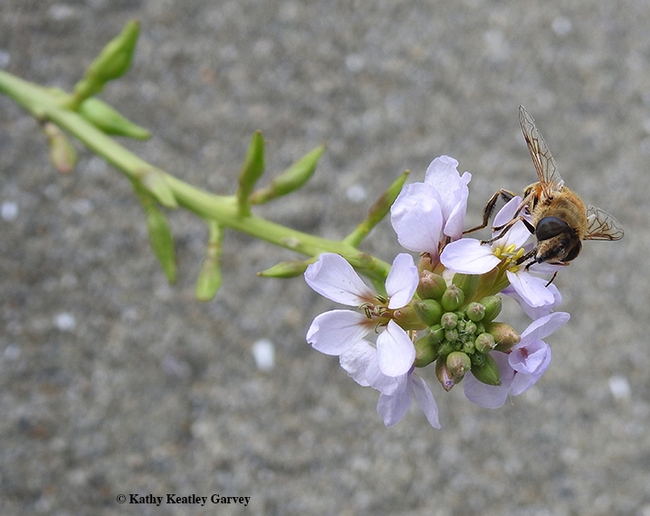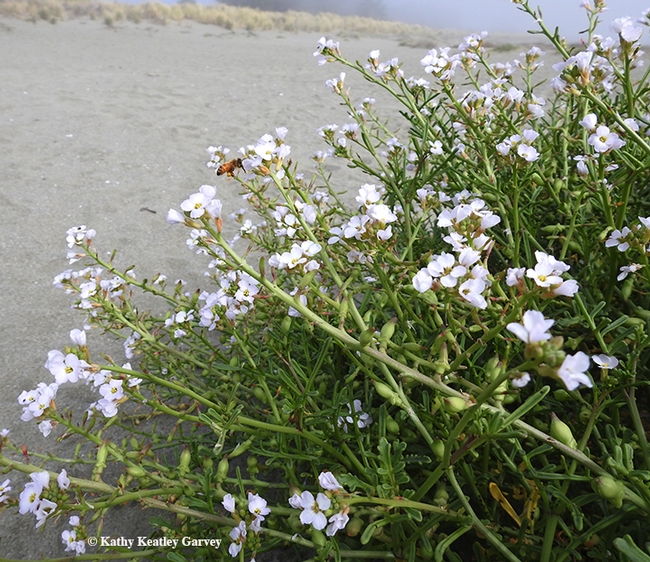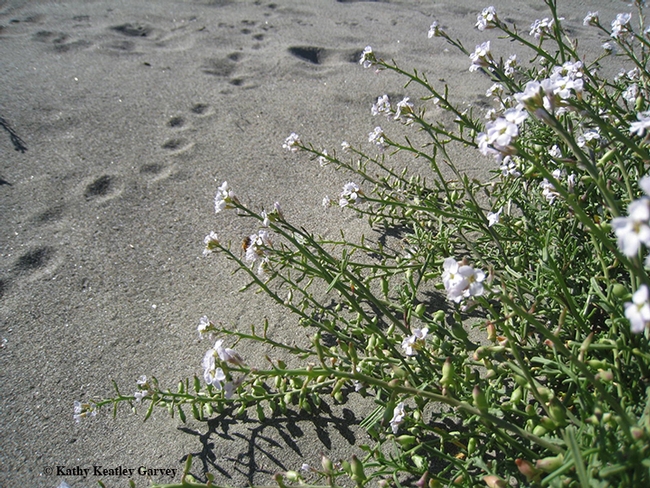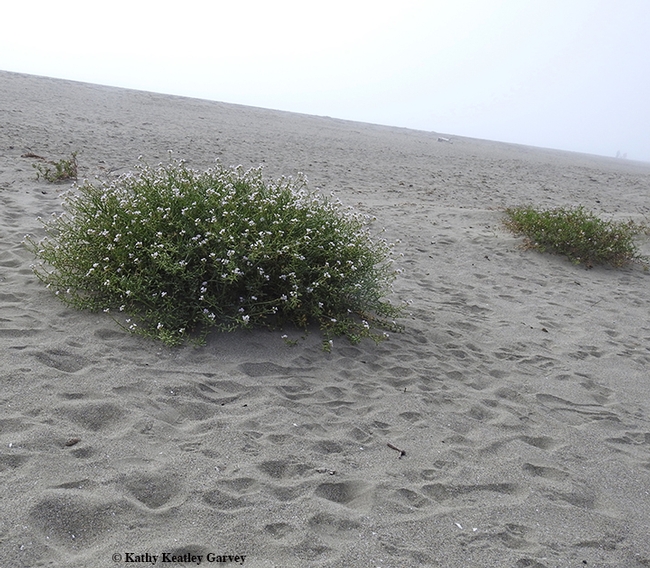So you're walking along Doran Regional Park Beach in Sonoma County on Tuesday, Oct. 16 and thinking about the pollinators in your back yard. (Don't we all?)
And then: what a delight to see. Apis mellifera (honey bees) and Eristalis tenax, syrphid flies (better known as a "drone flies") nectaring on the tiny blossoms of a sea rocket plant (genus Cakile).
This particular plant species? The European sea rocket, Cakile maritima, a succulent annual that's a member of the mustard family. It grows in clumps or mounds on sandy beaches and bluffs along the coastlines of North Africa, western Asia, and North America. It boasts a long, slender and stout taproot.
You've probably seen it. But you may not have noticed the pollinators.
"Their leaves are fleshy," is how Wikipedia describes the plant. "Flowers are typically pale mauve to white, with petals about 1 cm in length. Each fruit has two sections, one that remains attached to the adult, and the other which that falls off for dispersal by wind or water."
At Doran Beach, two species of sea rocket (C. maritima or European sea rocket, and C. edentula or American sea rocket) bloom from spring through summer--and sometimes in early fall.
Bees at the beach? Floating fruit?
Yes, indeed.
And flies (syrphids), too.
Attached Images:

A syrphid or hover fly, Eristalis tenax, nectaring on a sea rocket plant, Cakile maritima, on Oct. 18 at Doran Regional Park Beach, Sonoma. (Photo by Kathy Keatley Garvey)

Along with sand castles and beach balls and beach umbrellas, look for pollinators nectaring on sea rocket plants at the beach. Note the honey bee. (Photo by Kathy Keatley Garvey)

Footprints in the sand? Yes, and bees and other pollinators nectaring on sea rocket. (Photo by Kathy Keatley Garvey)

European sea rocket grows in clumps or mounds on sandy beaches along the coastlines of North Africa, western Asia, and North America. (Photo by Kathy Keatley Garvey)